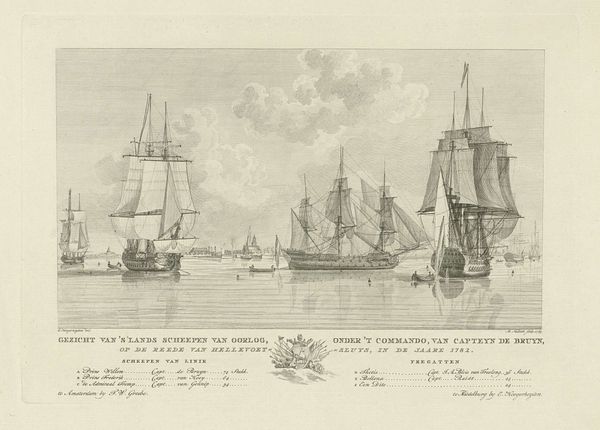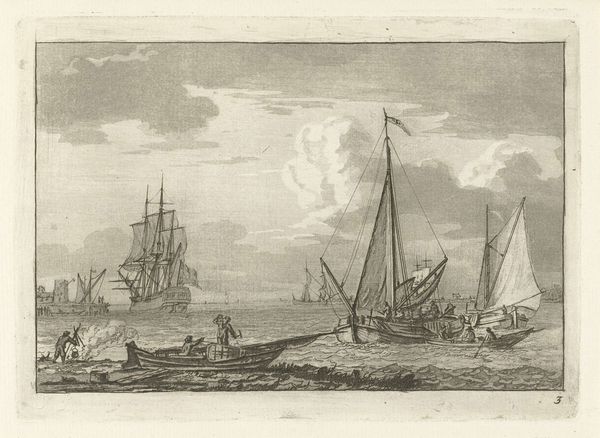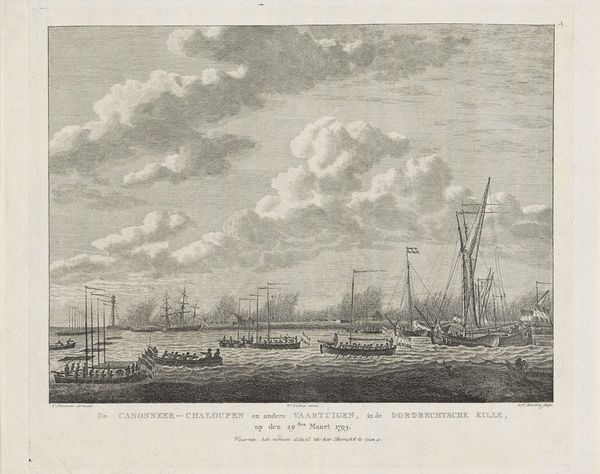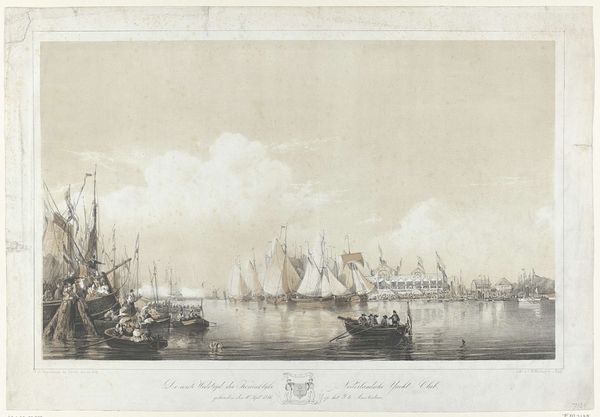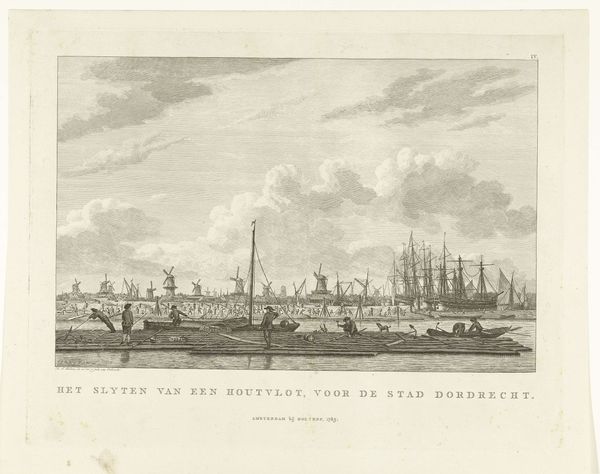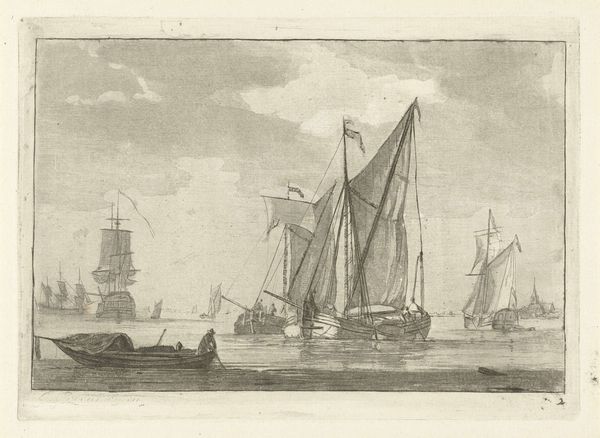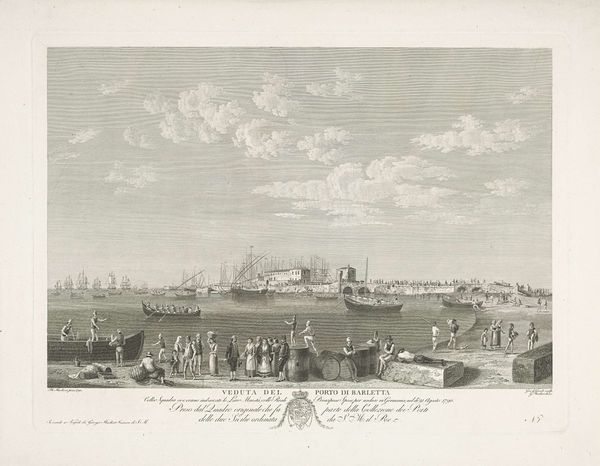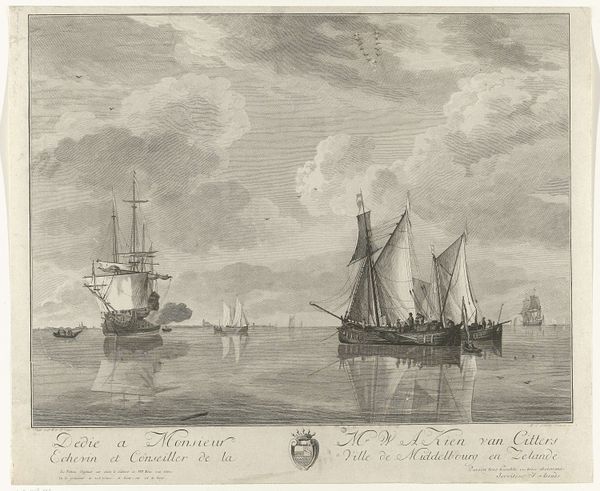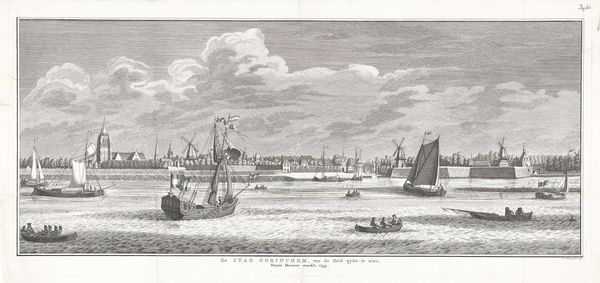
#
pencil drawn
#
aged paper
#
light pencil work
#
pencil sketch
#
old engraving style
#
personal sketchbook
#
pen-ink sketch
#
pen work
#
sketchbook drawing
#
pencil work
Dimensions: height 173 mm, width 411 mm
Copyright: Rijks Museum: Open Domain
Curator: This is Jan Caspar Philips's "Gezicht op Vlissingen, 1743," housed here at the Rijksmuseum. Editor: My first impression is quietude. Despite the ship and cityscape, there's an impressive stillness captured in this seemingly simple sketch. Curator: Look at the etching; the use of line and layering, very typical of the printmaking techniques used to disseminate information in the 18th century. How do you read it iconographically? Editor: The central placement of the ship speaks volumes. In that era, ships equaled trade, naval power, and connection to the wider world. The skyline with its recognizable church spire situates us firmly in Vlissingen, grounding the ship—and the viewer—in that specific place and moment. There’s a careful balance of ambition and rootedness. Curator: Exactly. Prints like these had a function. Philips’ hand gives us insight into the booming mercantile activities— the raw materials for international commerce were shipped right through port cities just like this one. Each mark on this paper carries information that goes far beyond the simple subject depicted, from global exchange of natural resources, like wood and flax, to the pigments and even the rag-based paper that artists relied on. Editor: It's also fascinating how Philips captures a kind of collective identity through this one vista. The church represents the city’s spiritual heart, while the ships embody its worldly ambitions. The whole image speaks to a complex set of values. Curator: Values intimately tied to resources and networks across the Dutch waterways, and beyond! The labor involved in producing not only the drawing, but then the printmaking plates, also signifies artistic ingenuity as a commodity to be exchanged across intellectual markets. Editor: Ultimately, beyond trade and social conditions, the composition reminds us of the timeless human desire to explore and connect. A ship, city and cloudy horizon: these symbolize our urge to transcend physical limits. Curator: To be able to physically grasp all that with an engraving is quite stunning; to feel that history as it passed through an individual, how amazing is that? Editor: Precisely, an evocative piece, isn’t it?
Comments
No comments
Be the first to comment and join the conversation on the ultimate creative platform.
